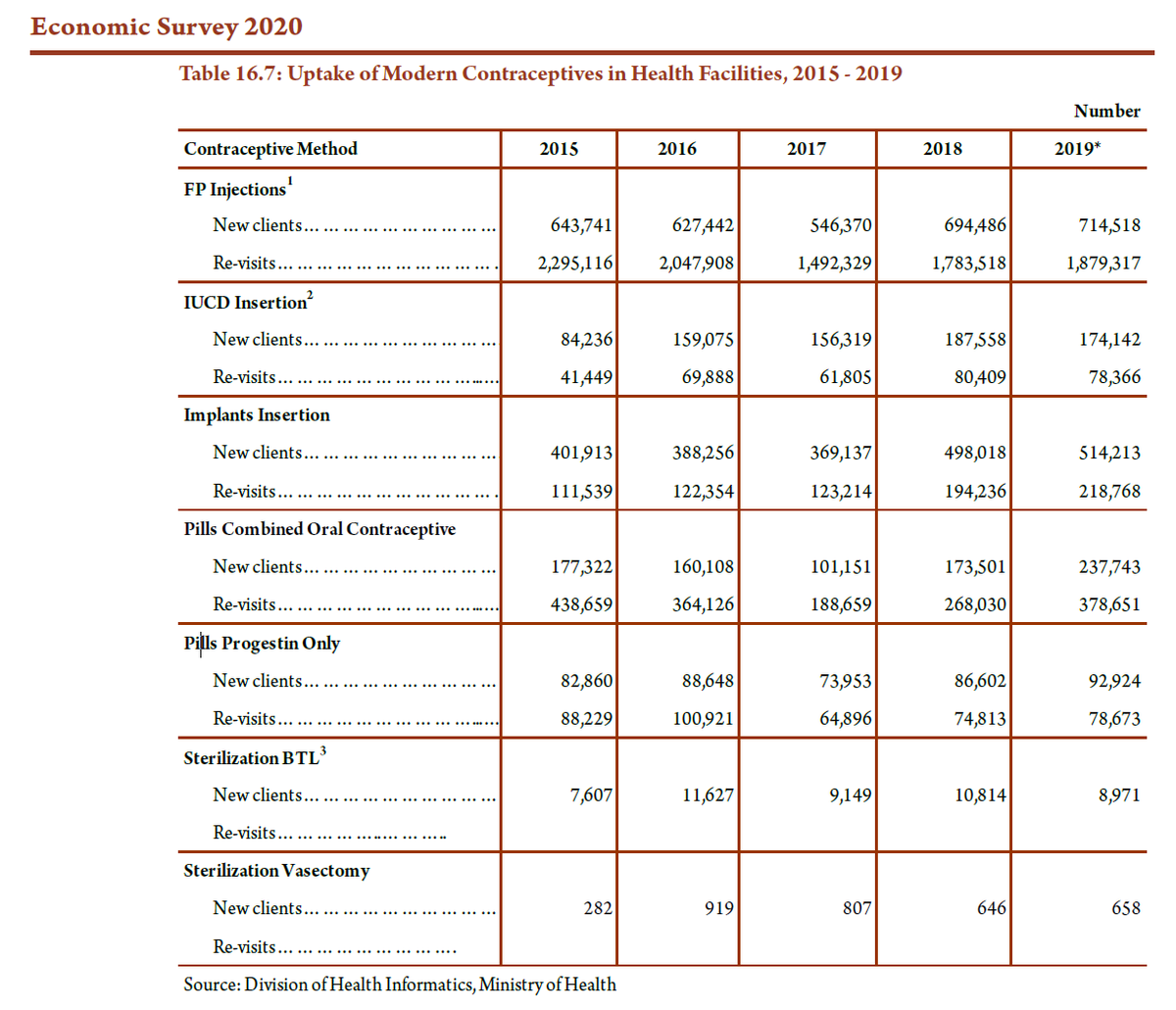@KeTreasury’s forecasting total tax collection of KES 1 771.4 Billion by end June. By end March, tax collections stood at KES 1 119.99 Billion.
How can KRA can magically raise KES 651 Billion Shillings in April, May and June. Seriously?
[2/n]
From an economy where consumer spending has drastically contracted. In the middle of a pandemic.
[3/n]
[4/n]
[5/n]
[6/n]
[7/n]
Total wired internet subscriptions rose by 40.9% to 427 700 largely due to growth of fixed fiber optic links [+52.9% to 268 800 in 2019]. Likely Safaricom bulking up its FTTH ? Sounds like it at this point, but I’m in the early stages of the report.
[8/n]
Some of this is still as grim as ever. Respiratory ailments, “continued to be the leading cause of outpatient disease incidence reported in public health facilities.
[9/n]
[10/n]
[11/n]
On the plus side, LPG consumption more than doubled between 2015 and 2019 to over 312 000 tonnes last year. But is it rising fast enough to offset wood-fuel use? Just using the respiratory illness data as a proxy, the answer might be no.
[12/n]
[13/n]
Diesel: +5.66% to 2 198 700 tonnes.
Petrol: +29.6% to 1 434 300 tonnes.
Jet fuel: +10.15 to 699 400 tonnes.
[14/n]
[15/n]
[16/n]
Formal sector job creation [both public and private] was at a *5-year low*.
Just 78 400 new jobs created in 2019. Bulk of that was because of a 19.96% fall in private sector job creation:
2018: 57 600
2019: 46 100
[17/n]
[1] they can’t.
[2] they’ve replaced labor with capital, i.e. automated/out-sourced jobs.
[18/n]
[19/n]
Estimated real earnings per employee:
Private Sector: KES 31 812
Public Sector: KES 31 562
Nominal wage growth, y/y: +8.1%
Real wage growth [ex. Inflation] +2.3%.
Slower rate than 2018, when real wage growth was 3.2%.
[20/n]
[21/n]
But, when you look at @NSSF_ke data, there is a massive divergence: 1.2 million women, compared to 3 million men. Why?
[22/n]
[23/n]
Headline numbers on the news business also make for deeply grim reading. 2019 had yet another year-on-year fall, but that’s not where the story is, in my view. *All* newspaper circulation categories have fallen steeply, between 2015 and 2019:.
[24/n]
Daily English Papers: -20.9% to 77.9 million copies, p.a.
Daily Swahili Papers: -25.2% to 3.896 million copies, p.a.
[25/n]
Way more. From the same media houses, via KNBS, average online visitors per day in 2019 rose by +84% to 2.91 million.
[26/n]
658 men had a vasectomy done in 2019, ~ 30% less than the 2016 number.
Number of women opting for tubal ligation? 8971 in 2019. -22.8% than 2016’speak, but way, way more than men opting for a permanent means of fertility control, by 13-to-1.
[27/n]
[28/n]

The @MOH_Kenya data in the survey didn’t have an age breakdown [this report is a summary, after all]. 2019’s Statistical Abstract may certainly have it, but that’s not out yet.
[29/n]


